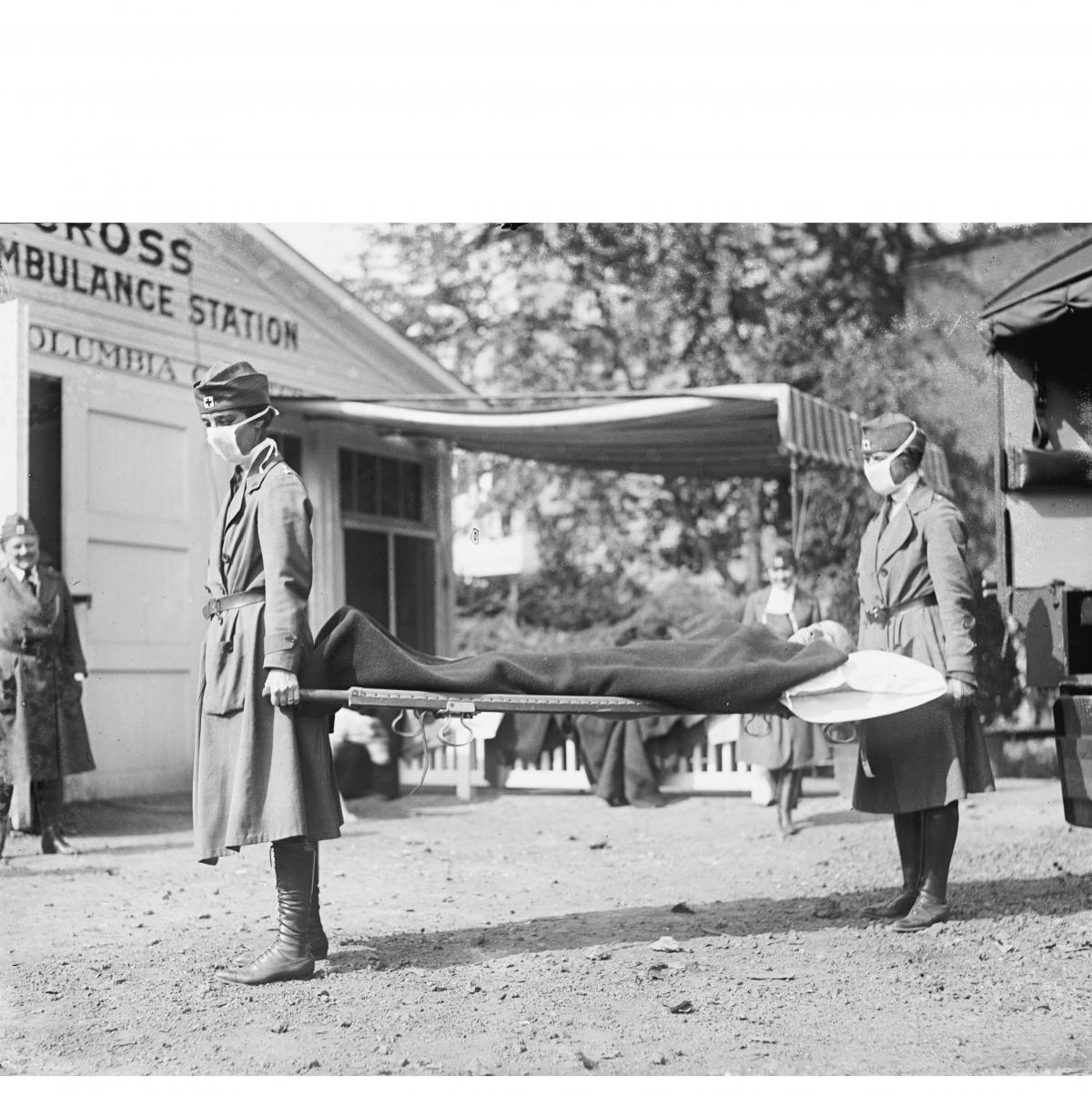In the early fall of 1918, a second wave of influenza is spreading, and World War I is waning, but not yet over. As the pandemic begins to grow more deadly, how can the United States balance the need to bring the war to an end while responding effectively to an increasingly deadly pandemic?
Students will understand that fighting World War I and responding to the 1918 influenza pandemic at the same time required trade-offs in policymaking.
Note: This case was originally published on 09/09/2020.
By the summer of 1918, World War I was waning but not yet over. Just a year after entering the war, the United States had mobilized its entire society and economy to fight. That summer, ten thousand U.S. troops were arriving in France every day, and nearly the entire labor force at home—forty million strong—was working to fuel the war effort. Against this backdrop, influenza began to spread. It first appeared in the spring of 1918, but in August a second, deadlier wave emerged in cities across the United States, Europe, and Africa. Within one month of the first cases arriving at Camp Devens, a military training base near Boston, the influenza sickened one-third of the camp’s forty thousand soldiers and killed nearly one thousand. As mass mobilization for the war effort continued, the virus tore through camps, ships, and trenches as it devastated crowded cities and factories at home. With no test or vaccine and treatments only available for a handful of symptoms, the 1918 influenza was on track to become a pandemic that would kill millions.
The war not only facilitated the influenza’s spread but also simultaneously hampered governments’ responses. For policymakers on both sides of the war, the measures required to fight the pandemic were at odds with those required to fight the war. Keeping medical resources and personnel at home rather than sending them to the front could boost domestic health-care capacity but deprive the war effort of vital resources. Quarantining troops or reducing their movement could slow the disease’s international spread but would risk sapping military strength and demonstrating weakness to the enemy. Clear, centralized communication of data and guidelines could slow the disease at home but jeopardize morale. Maintaining the total mobilization of society for the war required sustaining belief in the importance of the war effort. News of a seemingly greater threat—the influenza—could lead people to worry more about the health of their families than the success of U.S. troops.
After a string of defeats, Germany was rumored to be considering peace negotiations. The United States and its allies were therefore reluctant to let up pressure. Thus, despite warnings of the pandemic’s intensity, many countries continued to prioritize their war efforts. This included censoring media about the disease to downplay its severity and avoid showing weakness. The Woodrow Wilson administration remained largely silent about the pandemic, leaving a response in the hands of under-equipped and uncoordinated state and local governments. In the fall of 1918, however, as the pandemic grew increasingly severe, the United States faced the risk of the influenza becoming more deadly than the war itself unless the Wilson administration took a more active role.
The American Meuse-Argonne offensive, just begun, is mired in sickness. Field hospitals and medical transports along the Western Front are filling, and thousands of troops are stricken with influenza each day. The influenza is ravaging cities across the United States too. With limited medical and research capacity and little to no guidance from the president or the press, local governments are unable to effectively combat the pandemic. President Wilson has yet to make a public announcement concerning the influenza. Yet with the war’s end seemingly drawing near, Wilson has called a meeting of his cabinet to discuss whether and how to turn attention to the pandemic. Advisors will need to consider what measures are appropriate to contain or manage the disease and what trade-offs those measures could incur on the war effort.
Cabinet members should consider any combination of the following policy options:
-
Domestic measures, including public statements on the extent of the pandemic and federal guidelines for U.S. states to follow on social distancing practices, public event cancellation, quarantine procedures, and civilian travel restrictions. This option could slow the spread of influenza within the United States while largely maintaining the war effort abroad. However, this option risks damaging morale and disrupting production for the war effort.
-
Military measures, including halting or reducing the transport of new troops to France, implementing strict quarantine measures for troops, recalling some medical personnel, and diverting military resources and funding to domestic health responses. This option could bolster states’ and cities’ capacity to care for patients, but a weakening of U.S. forces could reinvigorate the enemy and prolong the war.
- Prioritize the war effort, including by upholding wartime censorship and maintaining current troop movements. This option would leave management of the pandemic up to state and local governments, doing little to slow the disease and lessen its death toll, but it has the best chance of ensuring swift victory in the war.


